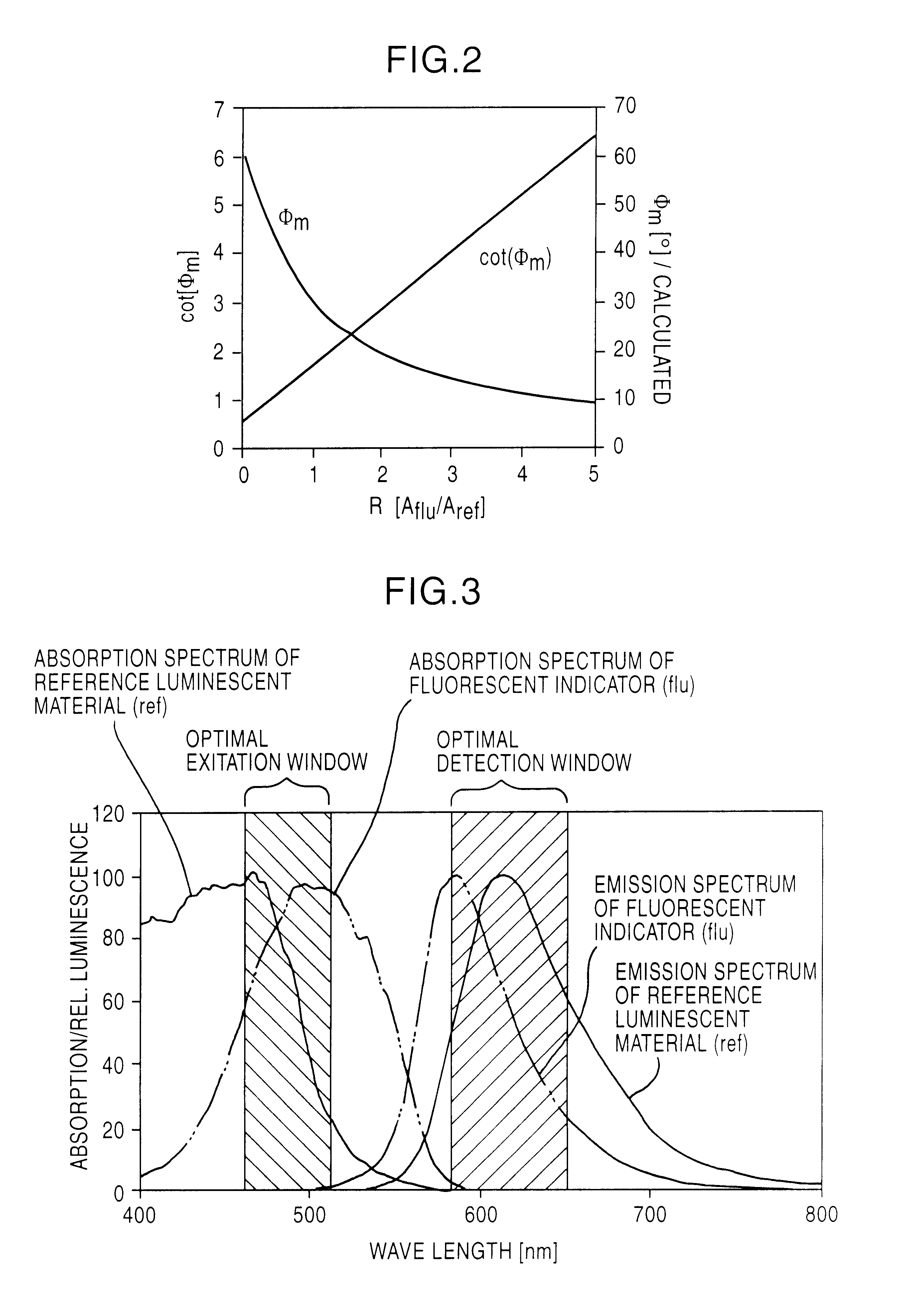Method and device for referencing fluorescence intensity signals
- Summary
- Abstract
- Description
- Claims
- Application Information
AI Technical Summary
Benefits of technology
Problems solved by technology
Method used
Image
Examples
Embodiment Construction
by means of examples.
FIG. 1 shows the dependence of the measured phase angle .phi..sub.m on the relationship between intensity of the fluorescence indicator and the reference luminescent material; A strong fluorescence signal, B weak fluorescence signal. Labels used are flu=variable fluorescence signal, ref=constant reference signal, ges=measured total signal;
FIG. 2 shows a computed relationship between the measured phase angle .phi..sub.m or its cot (.phi..sub.m) and the amplitude ratio R of the two luminescent materials;
FIG. 3 shows spectral properties of a suitable pair of fluorescence indicator and reference luminescent material. The hatched areas indicate optimum spectral windows for excitation of the luminescence signal and measurement of the emitted light;
FIG. 4 shows a time-resolved measurement of the ratio of signal intensities during the excitation pulse (I.sub.1) and during luminescence decay (I.sub.2), the ratio R being independent of the total signal amplitude, as it is...
PUM
| Property | Measurement | Unit |
|---|---|---|
| Time | aaaaa | aaaaa |
| Concentration | aaaaa | aaaaa |
| Decay rate | aaaaa | aaaaa |
Abstract
Description
Claims
Application Information
 Login to View More
Login to View More - R&D
- Intellectual Property
- Life Sciences
- Materials
- Tech Scout
- Unparalleled Data Quality
- Higher Quality Content
- 60% Fewer Hallucinations
Browse by: Latest US Patents, China's latest patents, Technical Efficacy Thesaurus, Application Domain, Technology Topic, Popular Technical Reports.
© 2025 PatSnap. All rights reserved.Legal|Privacy policy|Modern Slavery Act Transparency Statement|Sitemap|About US| Contact US: help@patsnap.com



